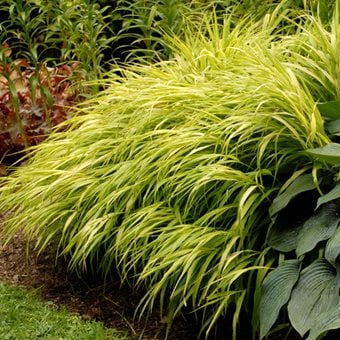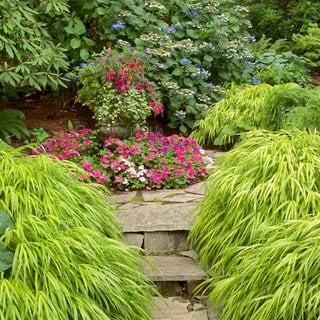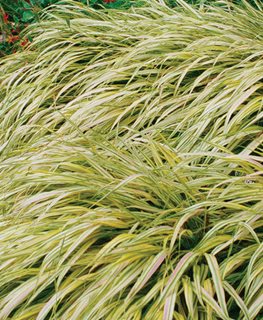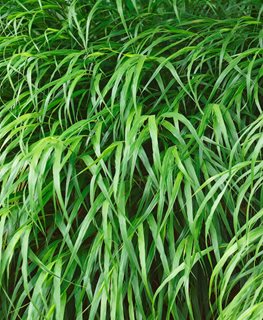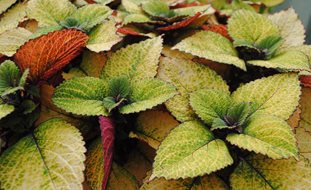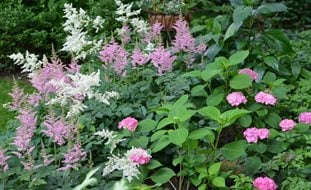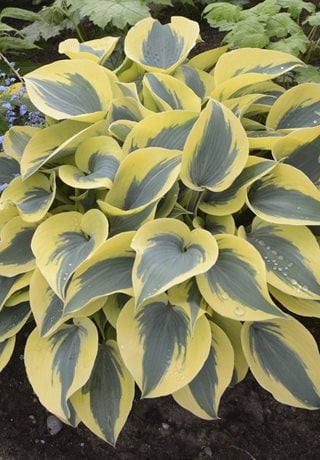Hakone Grass: Growing Gorgeous Japanese Forest Grass
This low-maintenance perennial grass flourishes in shady gardens.One of the few ornamental grasses that grows happily in partial shade, Hakone grass (also known as Japanese forest grass) is prized for its gracefully arching bamboo-like foliage that changes color with the seasons and brings gentle movement to the garden. With their elegant cascading habit, the slender leaves create a waterfall-like effect, especially when allowed to cascade down slopes, sprawl over rocks, and spill over the edges of containers.
Although this low-growing grass is shown to best effect when planted in mass, it can also be used along paths and walkways, the front of the border, as a specimen plant, or as an underplanting for trees and shrubs.
On this page: Basics | Planting | Care | Varieties | Frequently Asked Questions
- BASICS
- HOW TO PLANT JAPANESE FOREST GRASS
- JAPANESE FOREST GRASS CARE
- JAPANESE FOREST GRASS VARIETIES
- FREQUENTLY ASKED QUESTIONS
BASICS
Botanical name:
Hakonechloa macra (pronounced: hah-koe-neh-kloe-uh)
Common names:
Japanese forest grass, forest grass, Hakone grass (named after the Mount Hakone region of central Japan, where this plant is a native)
Plant type:
Perennial
Zones:
5-9
Exposure:
Partial shade, with protection from hot afternoon sun
Mature size:
12 to 18 inches tall and 12 to 24 inches wide
Habit:
Clump-forming, mounding habit
Bloom time:
Late spring until frost
Foliage:
Slender, arching, linear leaves may be bright green, chartreuse, golden yellow, or variegated, with a papery texture similar to the leaves of some types of bamboo. In fall, the foliage turns gorgeous shades of bronze, orange and red, providing multi-season interest.
Flowers:
Airy, greenish-yellow panicles appear in mid-to-late summer, but are inconspicuous and usually disguised by the foliage.
Special attributes:
- Shade tolerant
- Deer and rabbit resistant
- Slow growing and non-invasive
- Few pest or disease problems
- Non-toxic and pet-friendly
Landscape uses:
Borders, mass plantings, containers, rock gardens, woodland gardens, Japanese-style Zen gardens, groundcover.
PLANTING JAPANESE FOREST GRASS
When to plant:
In spring, after the danger of frost has passed.
Where to plant:
Where you plant your Hakone grass often depends on the variety you’re growing. Types with golden or variegated leaves need partial or dappled shade to avoid scorching of the foliage while those with solid green foliage can tolerate more sun. Avoid exposing plants to long periods of direct sunlight, particularly during the hottest part of the day.
Soil:
Fertile, well-drained soil enriched with plenty of organic matter to help it retain moisture. Hakone grass will not tolerate heavy clay soil or soils that drain poorly.
Planting in the garden:
Dig a hole twice as wide and equal in depth to the root ball. Place your plant in the hole so the top of the root ball is level with the surrounding soil and backfill, tamping down the soil gently to remove air pockets. Water thoroughly, and keep the soil evenly moist until established.
Spacing:
If using as a groundcover, space plants 18 to 24 inches apart, depending on their width at maturity.
Planting in containers:
Because of its slow growth rate and compact habit, Japanese forest grass is perfect for containers, either alone or as a spiller plant in mixed arrangements. If planting alone, choose a pot with large drainage holes that’s at least 2 inches in diameter larger than the nursery pot. Fill it with a high-quality, well-draining potting soil and place the container in a partly shady location protected from hot afternoon sun.
JAPANENSE FOREST GRASS CARE
Watering:
The key to the health of Japanese forest grass is consistent watering. Even established plants will wither in dry soil, so it’s important to keep the soil evenly moist (but not waterlogged) throughout the growing season. During hot and dry periods, you may need to water your plants daily, especially when growing them in containers.
Amendments and fertilizer:
To improve soil drainage and fertility, amend dense soils with compost or other organic matter. Also apply a layer of mulch around the base of your plants to help keep the soil cool and retain moisture.
Hakone grass needs little or no supplemental fertilizer if planted in rich, fertile soil. However, container-grown plants will benefit from monthly feedings with a balanced fertilizer.
Pruning:
Give your plants an annual trim in early spring, before new shoots emerge, to remove the dead foliage from the previous season. In areas with cold winters, it’s best to leave the foliage intact over winter to help provide insulation from harsh weather.
Propagating:
Because Hakone grass spreads by rhizomes, it can easily be divided into offsets in early spring just as new growth begins. Species plants also sprout easily from seed, but cultivars won’t produce plants that are true to the parent. (*See note below on propagating or dividing patented plants. Check your plant tags for the ® or ™ symbol by the plant name.)
Winter care:
In zone 7 and above, Hakone grass requires no special protection over winter. In colder regions (zones 5 & 6), apply a thick layer of leaves or other mulch
If growing in a container, bury the container in the ground in late fall or move it to a sheltered location away from the wind. You can also cover the pot with straw or another insulating material.
Pests and diseases:
Japanese forest grass has no serious insect or disease problems and is generally not bothered by deer.
JAPANESE FOREST GRASS VARIETIES
FREQUENTLY ASKED QUESTIONS
Does Japanese forest grass come back every year?
This perennial grass will return year after year if you protect it with mulch in areas with cold winters.
Is Japanese forest grass hard to grow?
No. The upkeep of Hakone grass is minimal. Once established, it requires little care beyond watering during periods of drought, winter protection in colder climates, and an annual pruning in early spring.
What does Hakone grass look like in winter?
In the fall, the foliage takes on orange to reddish tones, then turns light brown before dying back in winter. Unlike many other ornamental grasses, Japanese forest grass does not remain standing to provide winter interest.
Does Japanese forest grass spread?
Yes, this perennial grass spreads by underground rhizomes, but it’s a slow grower and will not rapidly overtake its neighbors.
Is Hakone grass drought tolerant?
In its native habitat, Hakone grass is accustomed to a cool, damp climate and needs consistently moist soil to thrive. Be sure to water plants deeply and regularly during prolonged periods of drought.
What are good companion plants for Japanese forest grass?
Combine with other shade-loving woodland plants such as hostas, ferns, astilbes, and heuchera. Cultivars with solid gold or yellow-striped leaves are especially striking in contrast to plants with blue or purple flowers or blue-green foliage. Or create a color echo by pairing them with plants with similarly colored yellow or gold leaves, such as Shadowland® 'Autumn Frost' hosta.
*REGARDING PROPAGATION: When it comes to propagating patented plants, there are strict rules in place prohibiting reproduction or propagation of these plants in any way. This means you can't reproduce them (even for use in your own garden), sell them, or bring them into the country without permission. The law does not make exceptions for what some might consider minor infringements. Any unauthorized use of patented plants is considered an infringement.
